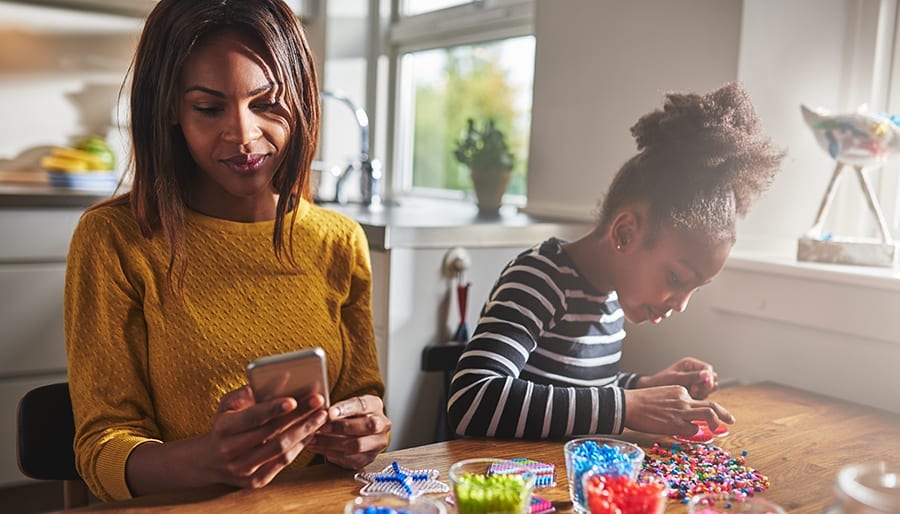Kids are growing up in an increasingly digital world, with infants as young as 4 months being exposed to technology — but that isn’t just when the child is looking at a screen. As a pediatrician and a mom of teens, I encourage parents to be aware of their own use of electronics because not only does screen time impact a child’s developing brain in both positive and negative ways, but parents’ screen time also has implications.
Positive screen time
As a parent, the natural role for you to take with screen time is the gatekeeper for your kid — controlling access, monitoring use and enforcing rules. However, that role can be difficult to fulfill if you don’t understand the technology you’re gatekeeping. This is where it’s important for parents to spend some time in front of a screen. The key is making that screen time positive by interacting with your kid where they’re spending their time.
SEE ALSO: From catfishing to cyberbullying, how to help kids avoid internet dangers
You can foster healthy intellectual, psychological and social development in your kids by interacting with the digital media and technology they use. For parents of teens, this might mean joining the social media sites your kids use and “follow” or “friend” them. Playing video games and watching videos/shows/YouTube together are also good ways to engage and bond with your kids.
By engaging with the same technology your kids are, you can better understand the platforms they’re using and how and where rules need to be in place. These platforms are constantly evolving, and through your involvement, you can help kids navigate changes and what’s appropriate for each platform. Engaging with kids through your own media use also helps to prevent exposure to inappropriate content, bullying and privacy risks.
Negative screen time
Although interaction with your kid via technology can be positive, in-person interaction continues to be vital. Technology can often interrupt the verbal and non-verbal in-person interaction that is imperative for their development. When you spend too much time in front of screens, you may not be giving your kids the appropriate amount of social and emotional bonding that is necessary for them to build emotional connections. This can lead to more conflicts as kids act out as a way to ask for attention.
If you are using screens during important family interactions like in the car, dinnertime or bedtime, you are showing your kids that it’s okay to disengage in these moments. And if they need to be told to turn the screen off in the future, they may have a harder time understanding why.
Setting limits
Setting media-friendly and media-free times establishes boundaries for both adults and kids. The AAP’s Family Media Use Plan can help families develop a personalized plan. When screen time expectations and limitations are reinforced consistently with all caregivers, this can lead to less conflict and more enjoyable family time at home.
Designate media-free times (in the car, during meals or homework) and media-free zones (the dining area and bedroom). During these times or in these zones, everyone in the family should avoid smart phones, computers, television, video games and tablets.
Most importantly, be a role model with screen time. Being off our devices helps parents become more engaged with our children and teaches them to follow our lead.
If you or your child have questions or concerns about screen time, talk to your pediatrician.
– Barbara Calkins, MD, pediatrician, Westbrook Pediatrics
Pediatricians from Children’s Hospital of Wisconsin care for children at primary care offices throughout southeast Wisconsin, including Westbrook Pediatrics in Brookfield. Find a pediatrician near you.
Learn more about Barbara Calkins, MD.

